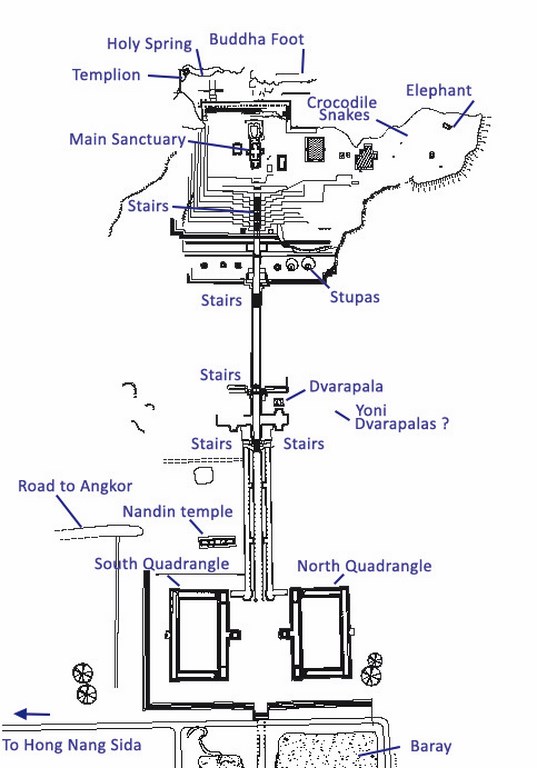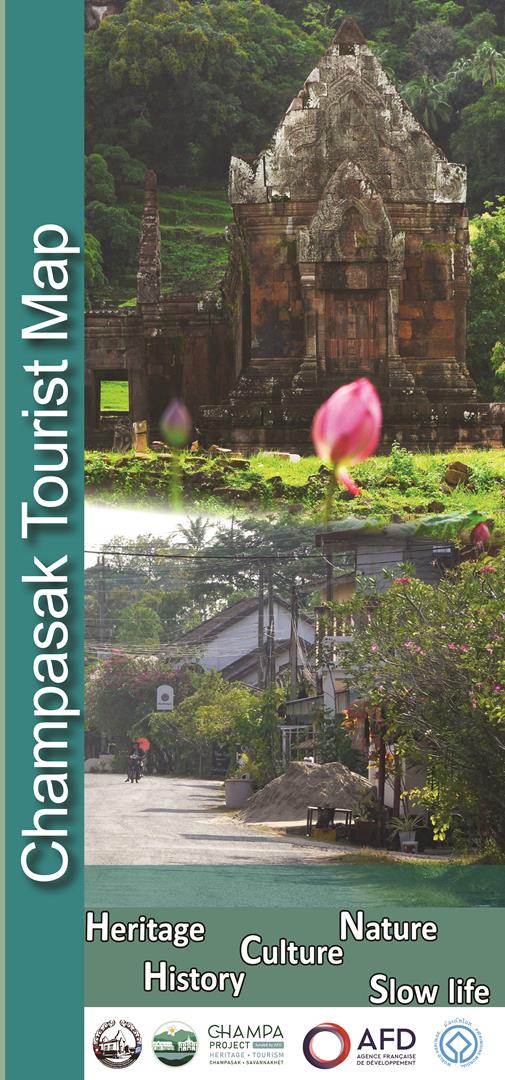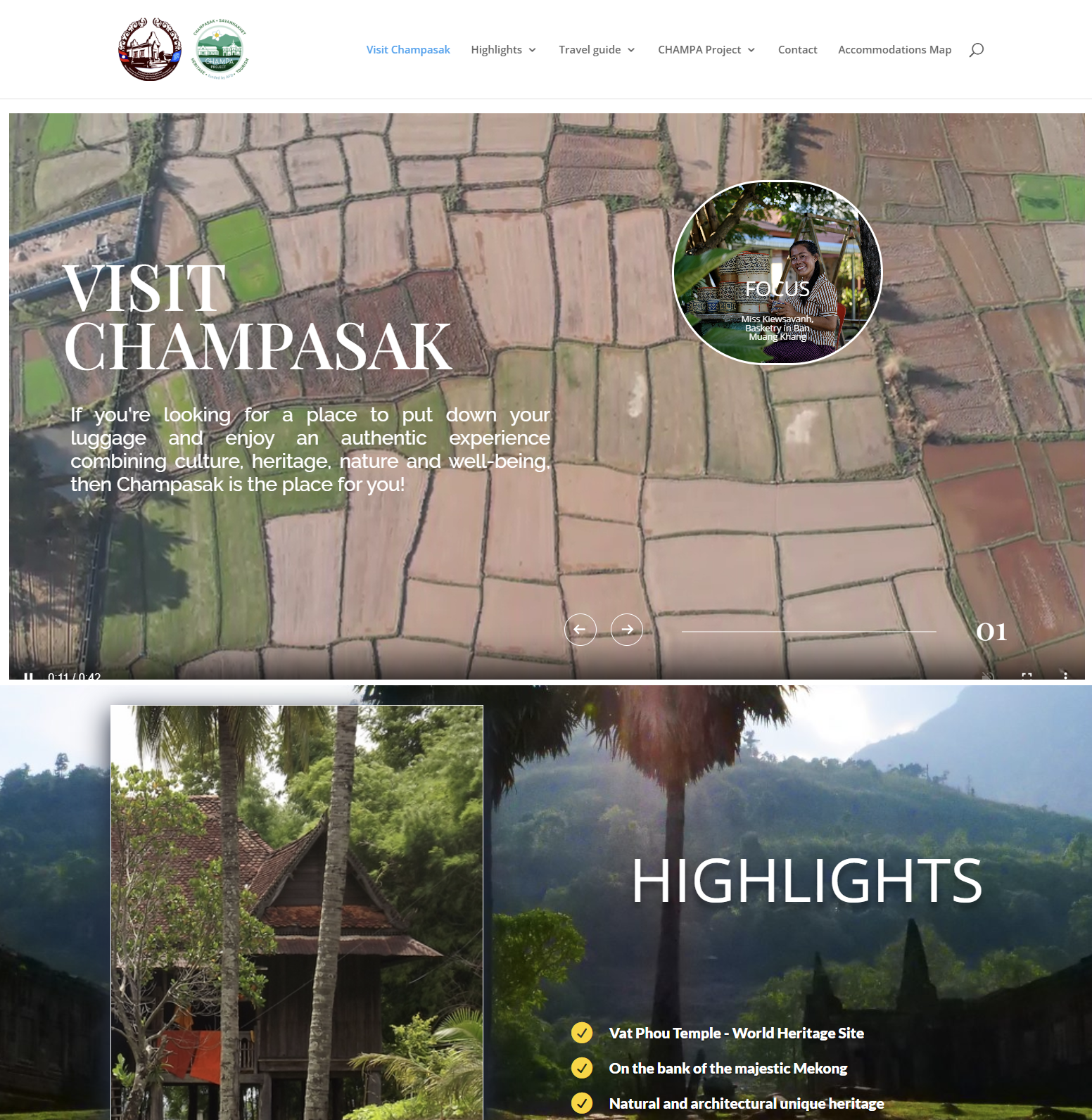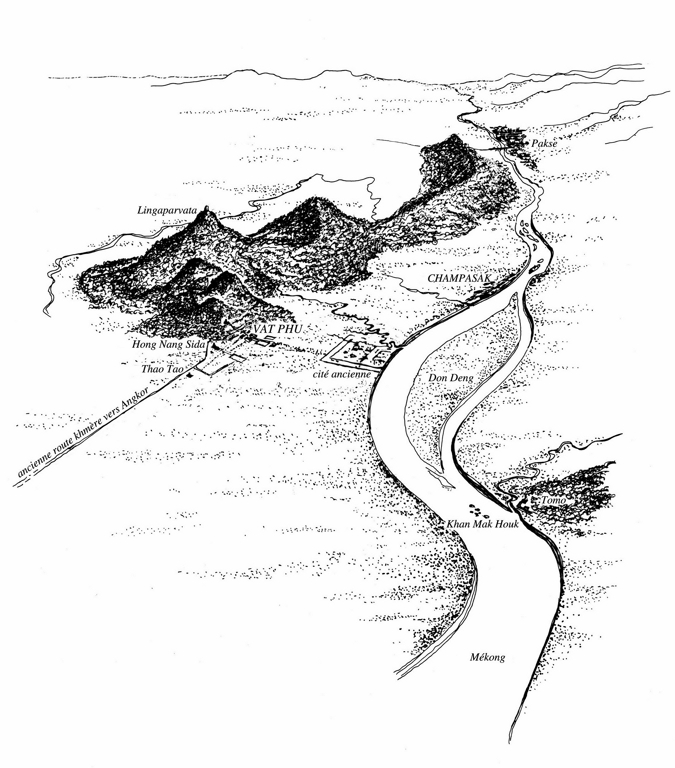Vat Phou - Hindouist complex Temples
Inscriptions from to the 5th and 6th centuries mention a sanctuary built on the mountain, during the same period as the foundation of the city. This sanctuary has disappeared and has been replaced by the religious complex we see today. This complex was built during the first part of the XIth century, with some additions and reconstructions from the 12th and 13th centuries.
Built along an East-West axis, it extends over 1.4 km and climbs up the slope, starting from the plain and ending about 100m above, where the main sanctuary is situated. The main sanctuary is located on a terrace at the foot of the cliff where the sacred spring flows.
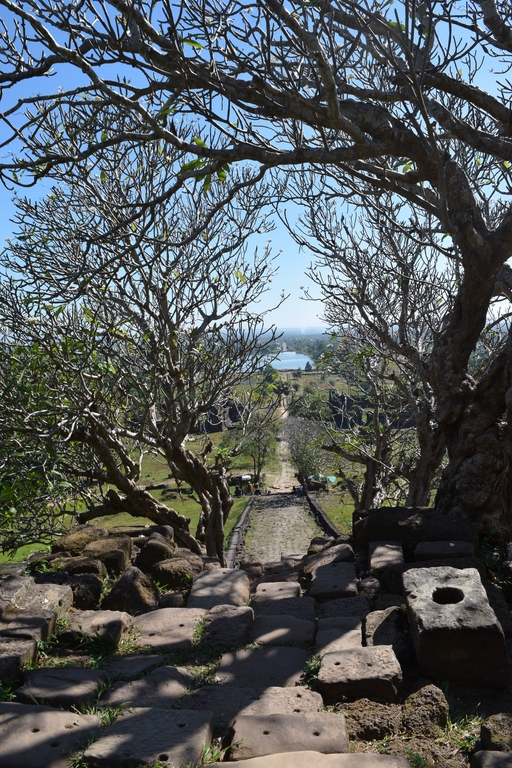 |
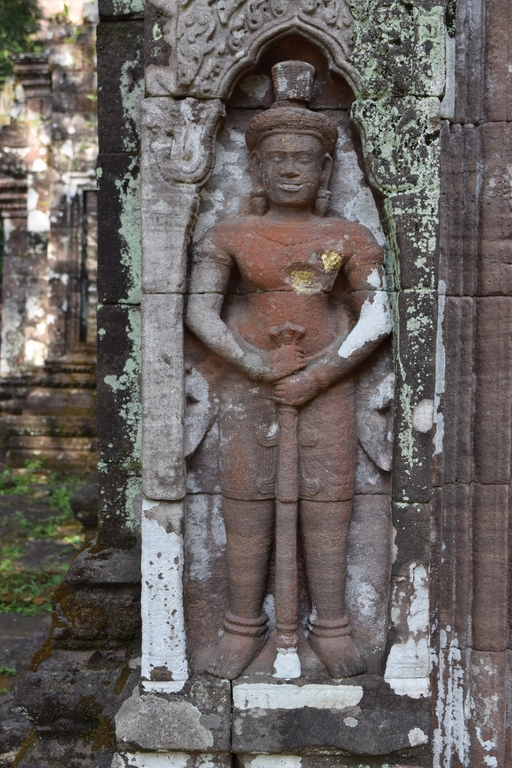 |
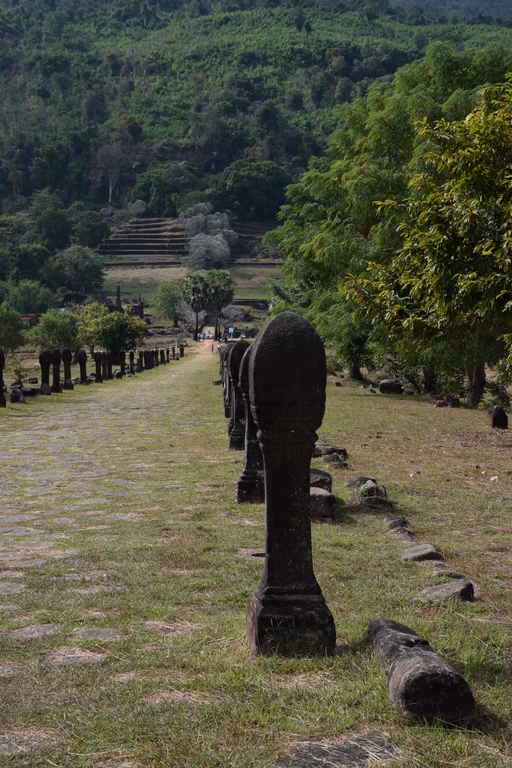 |
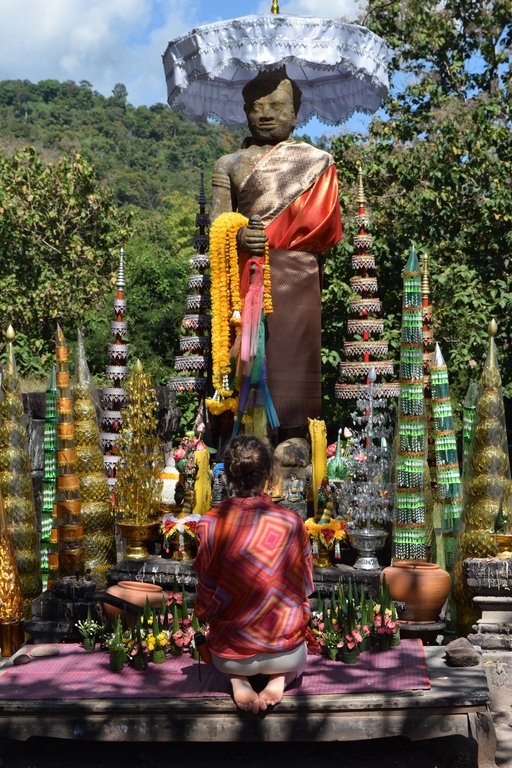 |
The Terraces
Lastly, an imposing sandstone bedrock constructed in seven stages, scaled by seven sets of eleven steps of stairs, supports the upper terrace, on which the main sanctuary in Baphuon style is built (middle of the 11th century). As in all Khmer sanctuaries, a small edifice is flanked on the southern side and is traditionally called the "library", though it certainly never contained any manuscripts. A portico with steps also typically borders on the West and is pierced with two doors which orginally gave access to the sacred spring.
Carved in the rock supporting the portico, behind the sanctuary, is a bas-relief representing the Trimurti, the Hindu trinity: in the centre is Shiva, principal god of the sanctuary, on the right is Brahma and on the left, Vishnu.
The Sanctuary
The sanctuary is composed of a front part in sandstone (hypostyle room), accessible through three doors (South, East and North), and of a back part, the cella in brick (the sanctuary itself) that sheltered the Linga. This was, in all likelihood, during a certain period, continuously dowsed with water conveyed from the sacred spring. Water entered through an orifice pierced in the western wall and was channeled away through a conduit made of stone, called "somasutra", in the northern wall. Though the watering of the Linga and the somasutra are regular features of the Khmer Hindu religion, the permanent watering is unique and gives Vat Phu its exceptional character.
Dvarapala (doorkeepers) and Devata or Apsaras (minor female divinities) are carved on the exterior of the sandstone walls' forepart.
Carved frontons and lintels top off all of the doors. Krishna (an avatar of Vishnu) is the main character but representations of Indra, Vishnu, ascetic Shiva, and scenes from the Ramayana can also be seen.
The Holy Spring
Behind the stepped portico is a closed precinct limited on the South by a wall, on the North by a chaos of rocks, and on the West by the foot of the cliff, where the sacred springs drip from the ceiling of the rock shelter. Excavations between 1991 and 1993 by P.R.A.L. revealed several successive and innovative architectural adaptations of this area (the excavation trenches have been refilled for protection). This enclosed area was entirely occupied by architectural structures related to the management of the spring, water collecting and supplying of the sanctuary. Such water complex, hitherto unseen in any other Khmer sanctuary, gives Vat Phu its uniqueness.
A small temple built in sandstone and bricks (11th century), wedged below the cliff, sanctifed the water from the Southern spring and probably contained a Linga. Behind this temple, under the cliff, small bronze Khmer statues of Vishnu and a female divinity, and more recent Buddha representations were found.
Water from the northern spring was collected in basins made of green sandstone and brick located under the cliff and, at least during the last architectural stage, conveyed to the sanctuary through a green sandstone aqueduct supported on small columns. The aqueduct followed the downslope on the right side of a monumental roofed and stepped sandstone gallery, then crossed the southern door of the portico through an orifice pierced in the door jamb to reach the terrace, where it turned North to arrive at the back of the main sanctuary, in front of the inlet to the cella and the Linga.
Several pedestals found in the spring's surroundings suggest the presence of statues (probably effigies of Shiva or Linga). Numerous carved stones in pre-angkorian style were found, reused in the newer area of the water complex, providing evidence for the ancient establishment of the area.
To the north
North of the sanctuary are some modern Buddhist buildings (in the course of removal). Further on, in a chaos of rocks, carved blocks of an elephant, a crocodile and two snakes dating from after the 13th century can be found. The story of human sacrifice being performed on the crocodile has not been proved. The remains of sandstone meditation cells (monolithic base, walls and ceiling), perhaps dating to the VIIth century, can also be seen.



